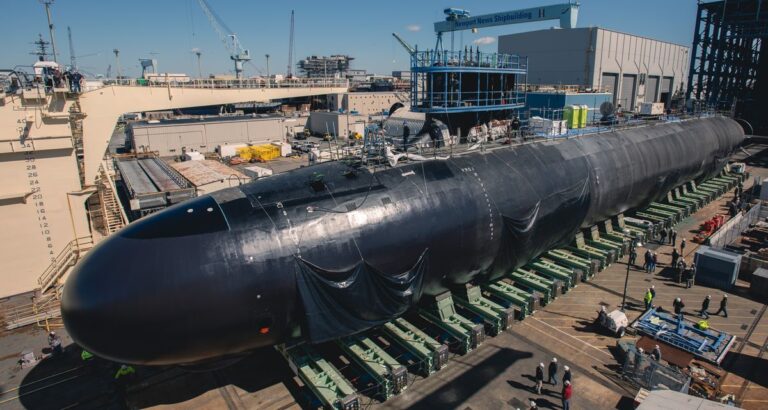Congress Moves $4.5B to Secure Two-Submarine-Per-Year Virginia-Class Procurement
The U.S. Congress has recently made a significant adjustment to the reconciliation bill, shifting $4.5 billion to fund the purchase of a Virginia-class submarine in Fiscal Year 2026 rather than FY 2027. This move is designed to ensure that the U.S. Navy maintains a two-submarine-per-year acquisition rate, a critical factor in sustaining naval capabilities and industrial production.
Strategic Importance of Virginia-Class Submarines
The Virginia-class submarines are among the most advanced attack submarines in the world, equipped with cutting-edge stealth, surveillance, and strike capabilities. The latest Block V variant includes the Virginia Payload Module, which significantly enhances its ability to launch cruise missiles. These submarines play a crucial role in maintaining U.S. naval superiority, particularly in contested waters.
Congressional Adjustments and Budgetary Strategy
Originally, the $4.5 billion was earmarked for a FY 2027 purchase, ensuring that funds were available for two submarines in that year. However, legislative sources indicated that shifting the funds to FY 2026 would hedge against the possibility of the Navy and White House requesting only one submarine in that fiscal year. This adjustment reflects the unique four-year spending horizon of the reconciliation bill, which requires lawmakers to anticipate future budgetary needs without a formal presidential budget submission.
Industry and Legislative Reactions
The shift in funding comes as the Navy and submarine contractors General Dynamics Electric Boat and HII’s Newport News Shipbuilding negotiate a multi-year deal for 10 Block VI Virginia-class submarines and five Columbia-class ballistic missile submarines. While industry representatives have refrained from commenting on the specifics of the reconciliation bill, they have expressed appreciation for the administration’s continued support for shipbuilding.
A Navy spokesperson declined to comment on the FY 2026 presidential budget, citing its predecisional nature. Meanwhile, the reconciliation bill, which passed the House, is now awaiting Senate approval.
Long-Term Implications
The decision to shift funding underscores the importance of maintaining a steady production rate for Virginia-class submarines. A consistent procurement schedule helps sustain the shipbuilding workforce, ensuring competitive wages and job stability. Congress has already allocated $18.5 billion for two Block V Virginia-class submarines, including $2.1 billion in long-lead material. Additionally, worker wages have been a focal point, as shipyards struggle to remain competitive with other industries.
As the reconciliation bill moves forward, its impact on U.S. naval strategy and defense spending will continue to be a topic of discussion. The Senate’s decision will determine whether the Navy can maintain its two-submarine-per-year cadence, a crucial factor in ensuring national security and maritime dominance.






